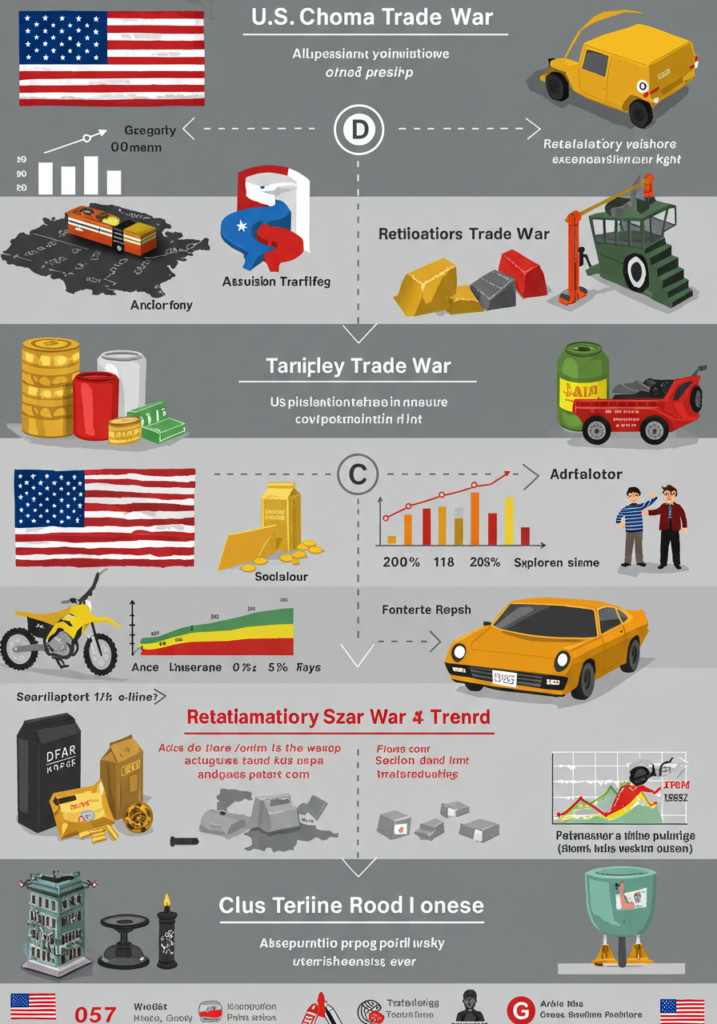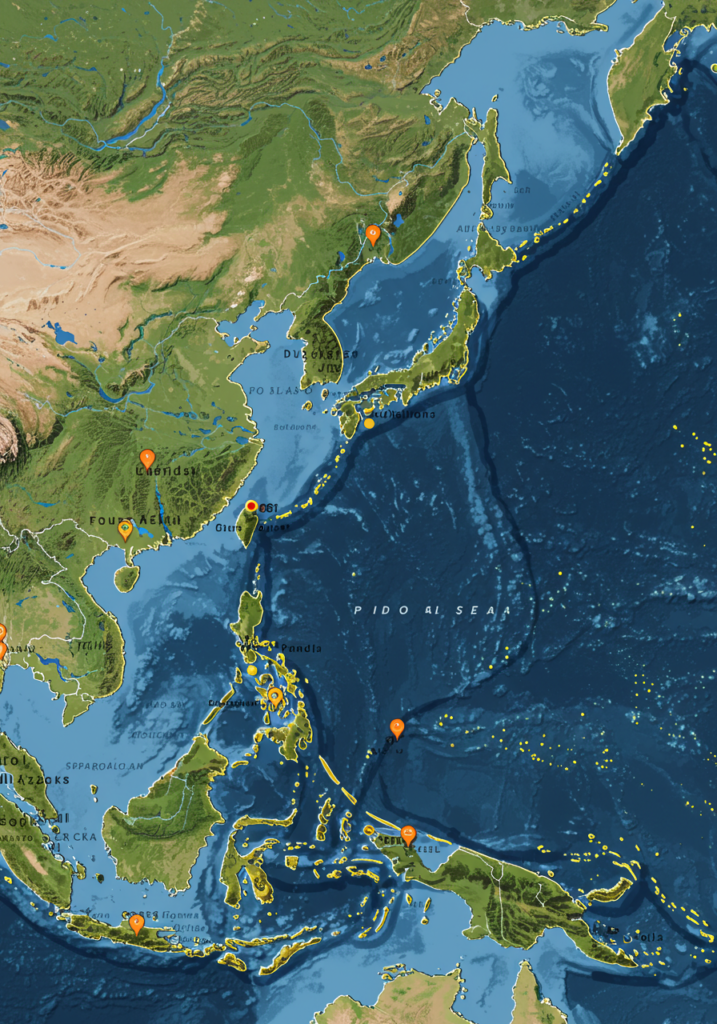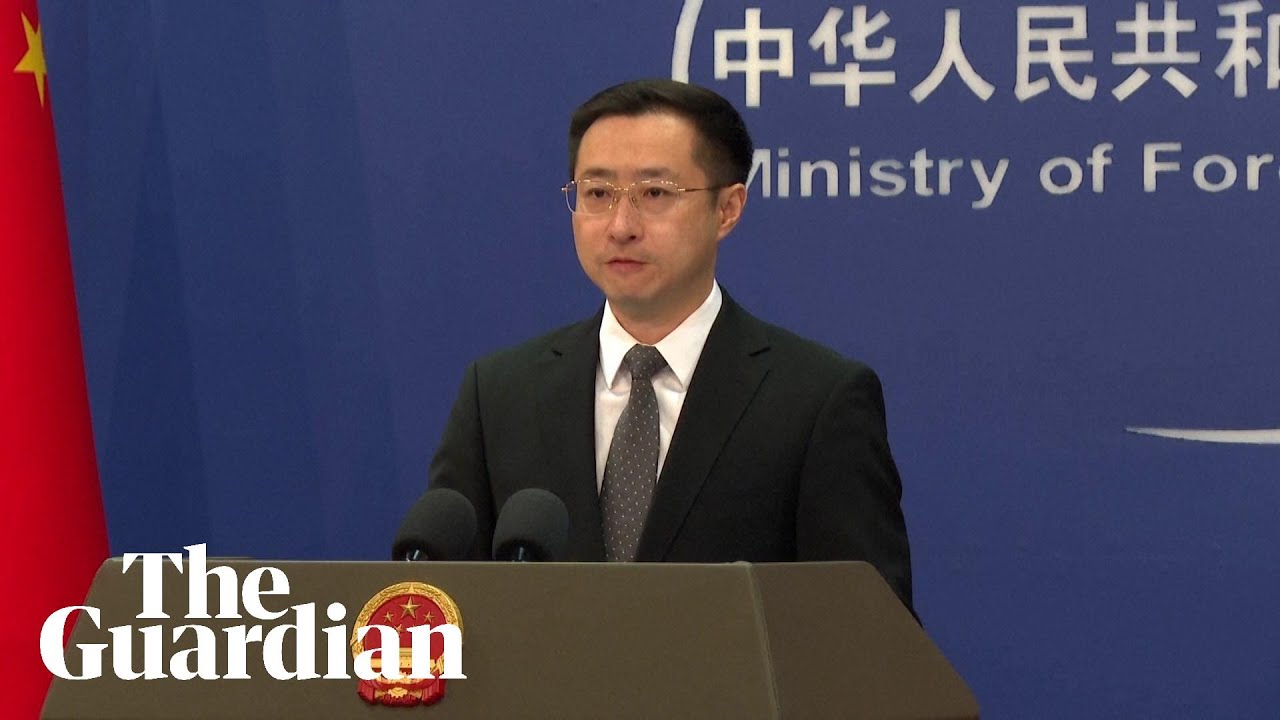Discover China’s strong stance on US tariffs as officials declare readiness to ‘fight to the end.’ Explore the implications for global trade and economy.
Introduction
In recent years, the trade relationship between the United States and China has become increasingly contentious, marked by tariffs, counter-tariffs, and a series of negotiations that have often led to more questions than answers. The imposition of tariffs by the U.S. government has been met with fierce resistance from China, which has declared its readiness to “fight to the end” to protect its economic interests. This blog post explores the background of the U.S.-China trade war, the implications of tariffs, and the broader geopolitical landscape that shapes this ongoing conflict.

The Origins of the Trade War
The trade tensions between the U.S. and China can be traced back to various factors, including trade imbalances, intellectual property theft, and concerns over China’s economic policies. The U.S. has long accused China of unfair trade practices, such as currency manipulation and subsidizing state-owned enterprises, which it argues give Chinese companies an unfair advantage in the global market.
In 2018, the Trump administration initiated a series of tariffs on Chinese imports, citing national security concerns and the need to protect American industries. These tariffs targeted a range of goods, from steel and aluminum to electronics and consumer products. The U.S. aimed to reduce its trade deficit with China, which had reached astronomical levels, and to push for structural changes in China’s economic policies.
China’s Response
China’s response to the U.S. tariffs was swift and resolute. The Chinese government retaliated with its own tariffs on U.S. goods, targeting key industries such as agriculture, automotive, and technology. The trade war escalated as both countries imposed additional rounds of tariffs, leading to increased prices for consumers and uncertainty for businesses on both sides.
Chinese officials have consistently emphasized their commitment to defending the country’s economic sovereignty. President Xi Jinping and other leaders have framed the trade war as not just an economic issue but also a matter of national pride and security. This narrative has resonated deeply within China, where many view the U.S. actions as an attempt to contain China’s rise as a global power.
Economic Impacts
The tariffs imposed by both countries have had significant economic consequences. In the U.S., consumers have felt the pinch as prices for everyday goods have risen. American farmers, particularly those reliant on exports to China, have been hit hard by retaliatory tariffs. Many have faced financial difficulties, leading to calls for government assistance and support.
In China, the trade war has also taken a toll on the economy. The country’s growth rate has slowed, and industries that rely heavily on exports have struggled to adapt to the changing landscape. The Chinese government has implemented stimulus measures to mitigate the impact, but the long-term effects of the trade war remain uncertain.
Geopolitical Considerations
The U.S.-China trade war is not just an economic conflict; it is also deeply intertwined with broader geopolitical considerations. As China continues to assert its influence on the global stage, the U.S. has sought to counterbalance this rise through various means, including strengthening alliances with other countries.
The Indo-Pacific region has become a focal point in this geopolitical struggle. The U.S. has ramped up its military presence in the region, conducting freedom of navigation operations in the South China Sea and strengthening partnerships with countries like India, Japan, and Australia. These actions are aimed at countering China’s territorial claims and influence in the region.
The Role of Technology
Technology has emerged as a critical battleground in the U.S.-China trade war. The competition for technological supremacy, particularly in areas like artificial intelligence, 5G telecommunications, and cybersecurity, has intensified. The U.S. has taken steps to restrict Chinese tech companies, such as Huawei, from accessing American technology and markets, citing national security concerns.
China, in response, has accelerated its efforts to develop its own technological capabilities. The Chinese government has invested heavily in research and development, aiming to achieve self-sufficiency in key technologies. This race for technological dominance adds another layer of complexity to the trade conflict and raises concerns about the future of global innovation.
The Path Forward

As the trade war continues, the question of how to resolve these tensions remains a pressing issue. Both countries have expressed a willingness to negotiate, but significant differences persist. The U.S. demands structural changes in China’s economic policies, while China seeks to protect its sovereignty and development model.
Recent negotiations have shown some promise, with both sides agreeing to a “phase one” trade deal in late 2019. This agreement included commitments from China to increase purchases of U.S. goods and address some intellectual property concerns. However, many issues remain unresolved, and the underlying tensions between the two nations continue to simmer.
Public Sentiment

Public sentiment in both countries plays a crucial role in shaping the future of the trade conflict. In the U.S., there is a growing awareness of the economic challenges posed by China, leading to increased support for tough measures against Chinese trade practices. However, there is also recognition of the interconnectedness of the global economy and the potential consequences of a prolonged trade war.
In China, public sentiment has largely rallied around the government’s stance against U.S. tariffs. National pride and a sense of resilience have been emphasized in state media, portraying the trade war as a test of China’s strength and determination. This narrative has fostered a sense of unity among the Chinese populace, making it difficult for the government to back down without appearing weak.
Conclusion
The U.S.-China trade war represents a complex interplay of economic, political, and technological factors. As both countries prepare to “fight to the end” over tariffs and trade practices, the implications extend far beyond their borders. The future of this conflict will shape the global economic landscape and influence international relations for years to come.
Resolving these tensions will require not only negotiations but also a willingness to understand the underlying issues at play. As the world watches closely, the outcome of this trade war will undoubtedly have lasting effects on the dynamics of global trade and the balance of power in the 21st century.
In the face of uncertainty, one thing is clear: the stakes are high, and both nations are determined to protect their interests, setting the stage for a prolonged and challenging confrontation.

